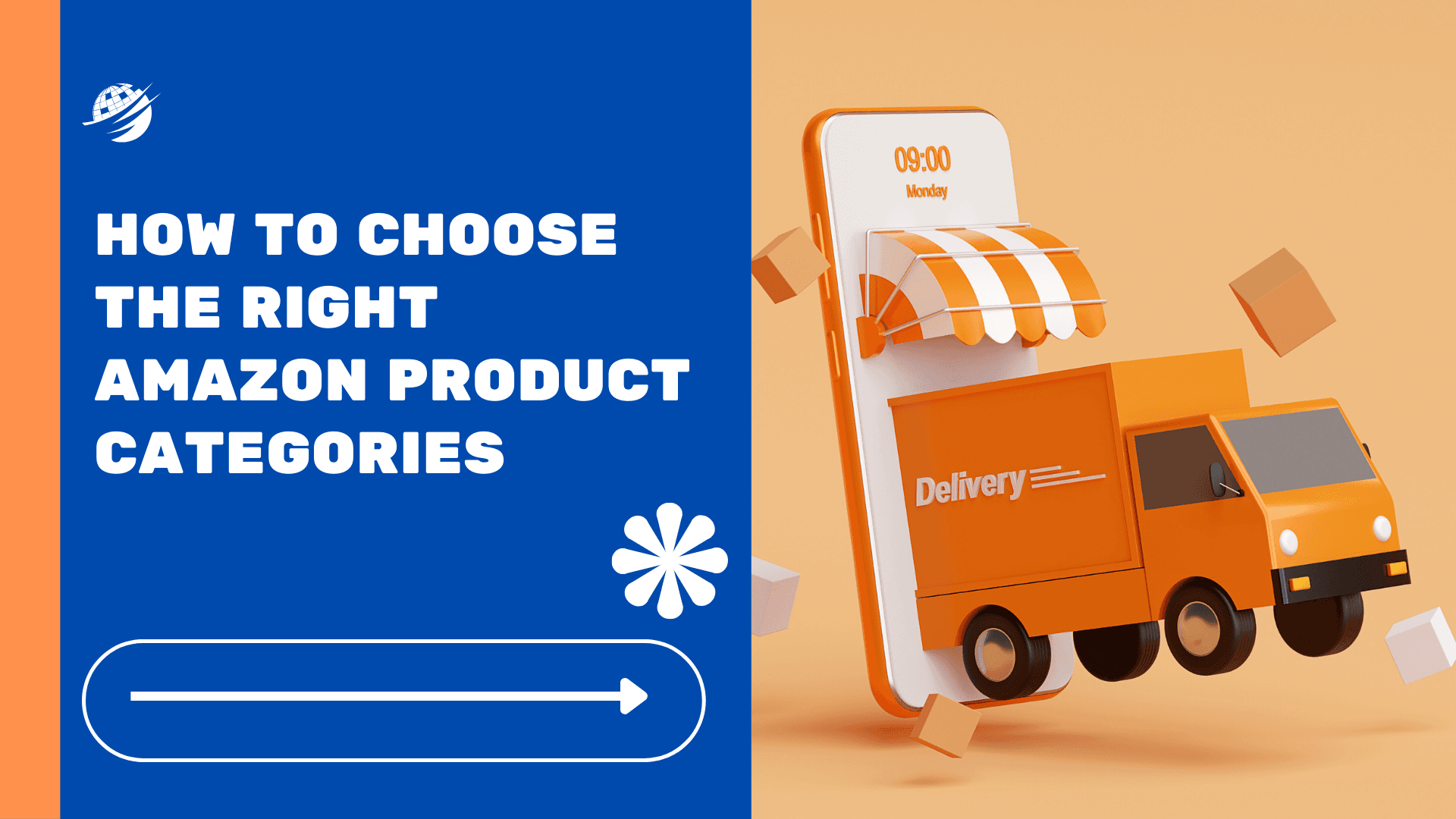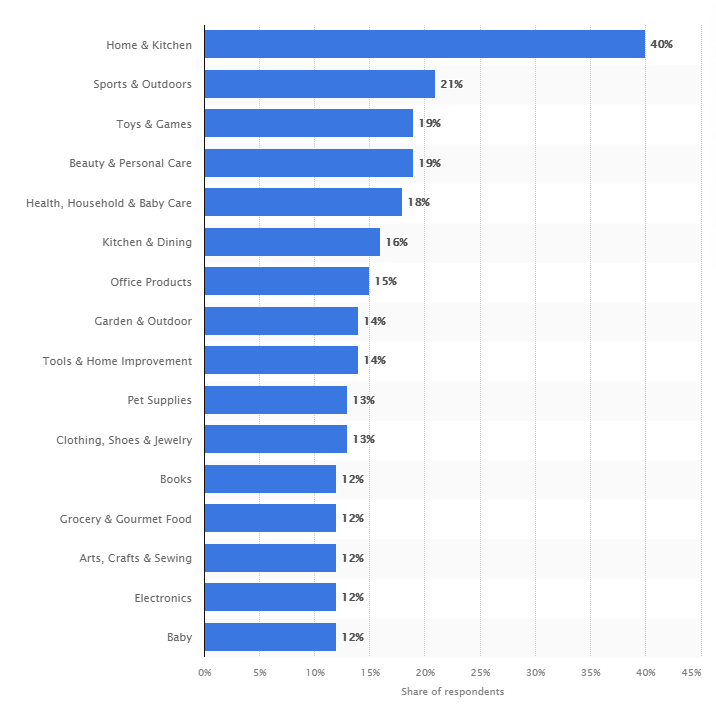
How to Choose the Right Amazon Product Categories for Maximum Visibility and Sales
Navigating the Amazon marketplace can be a daunting task, especially for new sellers. One of the key aspects of listing a product on Amazon is choosing the correct product categories. The product category not only helps potential customers find your product more easily but also places your product in the appropriate competitive space. In this article, we will discuss strategies and tips for selecting the most effective Amazon product categories to enhance visibility and drive sales.
Understanding Amazon’s Product Categories
Amazon has a vast and intricate system of product categories, each with its own subcategories. These categories range from broad classifications like 'Books' or 'Electronics' to more specific subcategories like 'Historical Fiction' or 'Bluetooth Speakers'. It's important to understand that the choice of category impacts how customers find your products through Amazon's search and filtering systems.
Why Choosing the Right Category Matters
- Search Relevance: Products in the most relevant category will appear in search results more often when customers use category-specific searches.
- Competition: The right category places your product among similar items, ensuring fair competition.
- Customer Expectations: Customers browsing a category have specific expectations; ensuring your product aligns with these can increase the likelihood of a sale.
- Amazon’s Algorithm: Amazon's A9 algorithm, which determines product ranking, considers category relevance as a factor.
How to Choose the Right Category

Research Your Product
Before you list your product, conduct thorough research. Understand its features, uses, and target audience. This initial step will guide you towards the categories that best suit your product.
Analyze Competitors
Look at where similar products are listed. Analyzing competitors is not about copying their strategy but understanding the industry standard and customer expectations. This also helps in identifying the subcategories they are using, which might be relevant to your product.
Use Amazon’s Search Function
Enter keywords related to your product in Amazon’s search bar and see which categories pop up. This can give you a good idea of where customers might expect to find products like yours.
Check Category Requirements
Some categories on Amazon are gated, meaning they require approval before you can list your product. Check for any specific requirements, like additional fees, performance checks, or quality assurance processes.
Consider Multiple Categories
If your product fits into more than one category, consider listing it in multiple categories to maximize exposure. However, be mindful not to stretch it too far from its core identity, as this can confuse customers and dilute your product's relevance.
Keep SEO in Mind
Ensure the category you choose aligns with the keywords you are targeting. The right category can bolster your SEO efforts on Amazon.
Stay Updated with Amazon’s Policies
Amazon occasionally updates its category structure. Keep abreast of these changes as they may affect where your product fits best.
Use Tools and Resources
Utilize tools like Amazon’s Seller Central, Helium 10, or Jungle Scout to get insights into category trends and performance. These tools can provide valuable data-driven guidance.
Test and Reevaluate
Don’t be afraid to change your product’s category if it’s not performing as expected. Monitor your product’s performance and be ready to make adjustments.
Consult Amazon’s Category Listings
Refer to Amazon's Category Listing for guidance. This resource offers a comprehensive view of all categories and subcategories available.
Leveraging Subcategories for Niche Targeting
After identifying the main category, delve deeper into subcategories. Amazon's subcategories allow you to target niche markets. Products in niche subcategories often face less competition and can appeal more directly to a specific type of customer. For instance, in the 'Books' category, a subcategory like 'Science Fiction Adventure' can attract a more targeted audience than the general 'Fiction' subcategory.
Understanding the Role of Browse Nodes
Amazon uses a system called "browse nodes" to organize its categories and subcategories. These are essentially numerical identifiers that represent specific places in Amazon's category hierarchy. Understanding and correctly using browse nodes can ensure your product is precisely categorized, increasing its chances of being found by the right customers.
Importance of Category-Specific Ranking Factors
Each category on Amazon has its unique ranking factors. For example, in fashion-related categories, visual appeal (through high-quality images) might be more crucial than in other categories. Similarly, technical specifications might be more critical in electronics categories. Tailoring your product listings to these category-specific ranking factors can improve your product’s visibility within the category.
Category-Driven Pricing Strategy
Category choice can influence how you price your product. Different categories may have different competitive pricing dynamics. For instance, categories with more competition might require more aggressive pricing strategies. Understanding the pricing landscape of your chosen category can help in setting a competitive yet profitable price.
Utilizing Amazon’s Category-Specific Advertising
Amazon offers category-specific advertising options, such as Sponsored Products ads. Once you've chosen your categories, you can leverage these advertising tools to target customers browsing within those categories. This targeted approach often leads to better conversion rates as the ads reach customers already interested in that category.
Continuously Monitor Category Performance
Amazon’s marketplace is dynamic, and category trends can shift. Continuously monitoring your product’s performance within its chosen category is crucial. Keep an eye on key metrics like sales, conversion rates, and category ranking. If performance dips, it might be time to reassess your category choice or adjust your listing strategy.
Staying Informed About Emerging Categories
Be proactive in identifying emerging categories or trends on Amazon. Early entry into a growing category can establish your product as a leader before it becomes overly saturated. Amazon often introduces new categories in response to shopping trends and emerging markets.
Conclusion
Selecting the right categories on Amazon is a critical step towards e-commerce success. It requires a balance of strategic research, understanding of Amazon's intricate categorization system, and ongoing optimization. By choosing the most relevant categories and subcategories, aligning with category-specific ranking factors, and continuously adapting to the changing marketplace, sellers can significantly improve their product's visibility, competitiveness, and sales potential on Amazon. Remember, the goal is to place your product where it will be most easily found and appreciated by the right customers, thereby driving more traffic, conversions, and ultimately, business growth.
Choosing the right Amazon product category requires a blend of research, strategic thinking, and sometimes, trial and error. By understanding your product, analyzing the competition, and staying informed about Amazon’s ever-evolving marketplace, you can select categories that not only increase your product’s visibility but also align it with the right audience, ultimately boosting your chances of sales success. Remember, the goal is to ensure that your product is easily discoverable, relevant, and appealing to the customer browsing in that category.